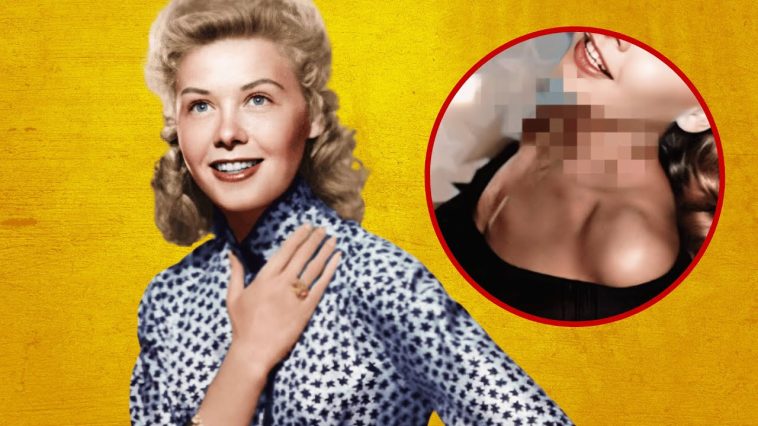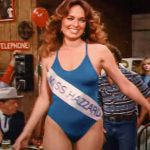Vera-Ellen captivated audiences with her lithe figure, radiant smile, and legendary dance partnership. It is with Fred Astaire in classics like Three Little Words and White Christmas. However, behind the scenes, rumors swirled about the silver screen starlet’s struggles with anorexia, premature aging, and later reclusiveness. While her talents shone on-screen, off-camera Vera Ellen’s life was shrouded in mystery and speculation that often overshadowed her gifts. Join Factsverse as we explore the rumors and uncover the truth about the iconic dancer and actress’s triumphs, challenges, and lasting legacy of bringing joy through dance.
Vera-Ellen’s Dance Talent and Appeal
From an early age, Vera-Ellen’s natural dance abilities were evident. Born in Ohio in 1921, she first took ballet lessons at age 9. Her teacher and mother quickly noticed her outstanding aptitude and skill. By 12, she had become the star pupil at a prestigious Cincinnati dance studio. It is known for picking up routines with ease and impressing crowds with her exuberant performances.
Her talents continued to blossom through her teenage years, as she further honed her skills in tap, jazz and ballet. She secured a spot touring with the Broadway musical Very Warm for May in 1939 at just 18 years old. The earning praise from New York critics for her triple-threat singing, acting and dancing abilities. Her early success secured her a film contract soon after with Samuel Goldwyn Productions.
Appeal On The Big Screen
It didn’t take long for her to demonstrate her versatility and appeal on the big screen. In Wonder Man (1945), she dazzles next to Danny Kaye with an animated, high-energy dance number. It is the highlights her limber movement and comedic timing. A couple years later in Words and Music (1948), she starred alongside a dance icon in Gene Kelly. It is matching his athletic style step-for-step and showcasing tremendous stamina.
Of course, there was also 1949’s On the Town, where she taps up a storm alongside Kelly and Frank Sinatra with precision, grace and pizzazz. As one of only six dancers talented enough to partner on screen with both Kelly and Fred Astaire over her career. Vera-Ellen combined elite skills with a magnetic, joyful screen presence.
1954’s White Christmas
Yet her most well-known role came in 1954’s White Christmas, playing alongside Bing Crosby and Danny Kaye as one-half of a sister dance act. In numerous show-stopping numbers, Vera-Ellen mesmerizes with her versatility. Whether gracefully twirling across the floor or nailing rapid-fire tap combinations with a captivating mix of elegance and power.
On film, Vera-Ellen fully embodied the consummate entertainer through her abundant charm, energy and complete command of any dance style thrown her way. While gossip later swirled about her figure, in her youth, few could match Vera-Ellen’s vitality and prowess as a dancer. For over a decade, her name was synonymous with dance in Hollywood musicals, dazzling audiences with her a flair that balanced refined technique with joyful, animated performances. Though her legacy became complicated by speculation into personal matters, Vera-Ellen’s exceptional skill and versatility cemented her place as one of the greatest triple threats of the golden age of film.
Vera-Ellen’s Relationship With Food and Body Image
Vera-Ellen’s complicated history with food and striving for bodily perfection seemingly stemmed from a young age. As a promising dance talent, an extreme emphasis was placed on maintaining a very slim physique by her instructors especially Vera-Ellen’s mother. Though strict diets were common for dancers then, the intense focus on thinness came to profoundly impact Vera-Ellen’s habits and body image for life.
When she first began intensive dance training around age 12, Vera-Ellen was immediately put on highly restrictive diets by her mother and teachers who closely dictated everything she could eat. Meals centered only around raw fruits and vegetables, with no treats permitted. In later years, Vera-Ellen reflected that she felt “controlled by food” from this formative time in her dance studies.
Rigorous Training
As she continued rigorous training through her teen years, the external pressures only escalated. Daily weigh-ins were enforced, with scoldings if she fluctuated even slightly above her sub-110-pound target weight. Vera-Ellen became anxious about eating, even as she coped with the physical demands of long rehearsals and performances. The message was clear early on – extreme discipline around food. Thinness was mandatory for any chance at success in dance.
When Vera-Ellen soon after broke out on Broadway at just 18 years old, she encountered the same distorted perspectives. Reviews commented extensively on her weight and tiny waist size rather than the incredible singing, acting and dancing talent she displayed. It reinforced the notion that a slender, boyish physique was a requirement for a rising star.
When Hollywood came calling shortly after, the external pressures on Vera-Ellen’s figure reached new extremes. As one of Samuel Goldwyn Studio’s most popular young talents, she was closely managed by executives, publicists and wardrobe staff. Special lighting, padding and costumes were employed in productions to conceal any slight weight fluctuations and present an exaggerated slimness on-camera.
A Rail-thin Physique
Throughout her peak fame in the late 1940s and early 1950s, Vera-Ellen maintained a rail-thin physique as she continued coping with body image issues rooted in her early training. Friends noted her personal diet still consisted mostly of just fruits and vegetables by choice, and she possessed an anxious, perfectionist attitude about maintaining her weight. There were also signs of possible binging issues behind the scenes.
Sadly, as Vera-Ellen aged and the dance roles dried up in the late 1950s, the long-term food and body image struggles took a greater toll. Some close to her suspected she alternated between extreme dieting and uncontrolled binging habits, further distorting her self-image as her weight fluctuated significantly. By the time she passed at only 60 years old in 1981, Vera-Ellen’s once envied slender figure had withered away.
The Mystery of Her Neck in White Christmas
Of all the rumors tied to Vera-Ellen over the years, one of the most enduring involves the conspicuous coverage of her neck throughout the 1954 hit film White Christmas. In every scene, Vera-Ellen wears either a choker necklace or a high-necked costume that fully covers her neck and décolletage. This fashion choice sparked waves of speculation that she was hiding skin prematurely aged or ravaged by eating disorders. However, a closer look suggests the reasons were likely not so ominous.
The most popular explanation put forth is that Vera-Ellen’s neck showed clear visible signs of aging, wrinkling, and vascular damage from years of extreme weight fluctuations and eating issues. Some claim makeup artists on White Christmas informed Vera-Ellen that her neck skin looked decades older than her thirty-something actual age. Hence, strategic turtlenecks and chokers used to conceal the skin betraying her still youthful appearance.
However, professional portraits taken just before and after filming seem to dispute this rapid aging theory. In photos from 1953 and at the 1955 Oscars, Vera-Ellen’s neck and décolletage still appear smooth and youthful without any signs of wrinkling or pronounced tendons. Her slim figure also looks relatively consistent in these timeframes, not showing obvious signs of recent weight loss. This evidence does counter the argument she was hiding skin ravaged by anorexia or binge eating.
Unflattering Lighting Tests
Another common explanation is that unflattering lighting tests revealed Vera-Ellen’s extremely slender frame looked bony and aged under the cameras. Self-conscious about her prominent anatomy, strategic high-necked costumes were then suggested to conceal the harsh shadows. Yet Vera-Ellen had endured similar lighting and cameras for years, and films immediately before and after show her neckline without issue.
There’s also a chance the concealed neck simply became Vera-Ellen’s trademark “look” in White Christmas by request. Her shy, innocent character was meant to portray the more modest sister to Rosemary Clooney’s worldly star persona. Perhaps the costume department leaned into this contrast by covering Vera-Ellen up more. Still, just months after filming, Vera-Ellen again wore low-cut dresses on the red carpet.
While Vera-Ellen’s history with distorted body image and food struggles should not be dismissed, the available evidence best disputes that at 34 years old she was already hiding severe aging or illness exclusively on her neck and chest during production. More likely, it was a costume choice to portray her mousy character or adjust for lighting concerns. Yet the rumors still persist of sensationalized cover-ups rather than simply celebrating Vera-Ellen’s scene-stealing dance talents so prominently on display throughout White Christmas as she dazzles alongside Bing Crosby and Danny Kaye.
Perspectives from Friends and Family
Despite the many rumors that swirled about Vera-Ellen’s life, those closest to her paint a kinder perspective of the beloved star. While acknowledging her struggles over the years, friends praised Vera-Ellen’s warmth, generosity and loyalty through the turbulent times.
Longtime friend and actress Ruth Webb knew Vera-Ellen since her earliest days in Hollywood and told biographers emphatically that Vera-Ellen was one of the most wonderful people she’d ever known. Although Ruth did not deny Vera-Ellen likely battled issues with food and body image, she highlighted her friend’s genuine, caring spirit – often taking in stray animals off the street and financially supporting other struggling performers from her own pocket through the years.
Frequent co-star and dance partner Fred Astaire also held Vera-Ellen in high personal and professional regard throughout his life. In interviews, Astaire commented that Vera-Ellen was “a charmer…and delight” to collaborate with both on-set and off. He spoke admirably of her “remarkable talent” and “tireless professionalism” during their projects together, noting especially how she continued perfecting routines despite painful injuries.
Mutual Warm Bond
Vera-Ellen was equally effusive when asked about Astaire, suggesting a mutual warm bond. She glowingly called Astaire “simply perfect” as a dance partner for his patience, guidance and constant encouragement through the years as she rose from chorus girl to his co-star. Vera-Ellen credited Astaire with being vital to helping her hone her skills.
While more private and guarded than her outgoing film persona later in life, those in Vera-Ellen’s inner circle fondly recall her fierce loyalty as a confidant through the years. A few have disputed she became fully reclusive as commonly believed, maintaining that while avoiding the press, she still regularly met close friends for quiet dinners and holidays.
Most poignantly though, Vera-Ellen’s only child, Victoria, has offered the most intimate perspective of her mother off-screen over the years. She dispelled exaggerated myths of a frail recluse often assumed about her mother’s last years. Victoria shared beautiful memories of family trips, thoughtful handmade gifts from her mother and quiet visits filled with optimism, laughter and resilience between her mother, herself and even her own daughter despite life’s difficulties. Her reflections reveal Vera-Ellen’s more personal legacy of grace and perseverance through both good times and bad
There you have it. It’s now time to hear from you. Beyond the rumors and tragedies, what do you think was Vera-Ellen’s most iconic contribution to Hollywood’s Golden Age of musicals? Let us know in the comments.



